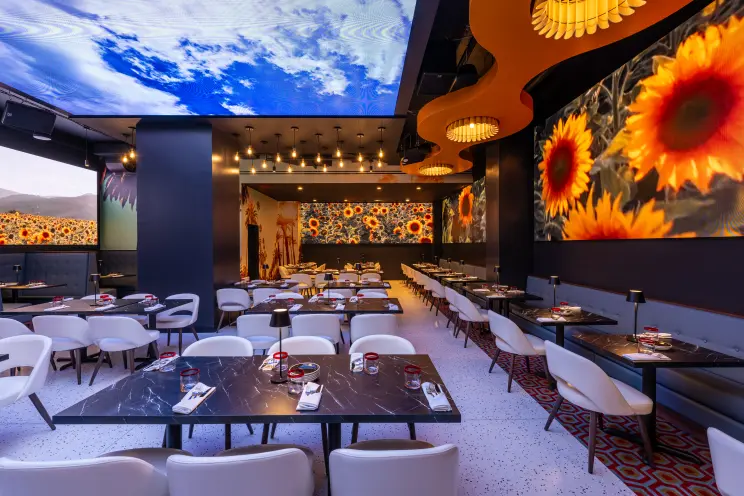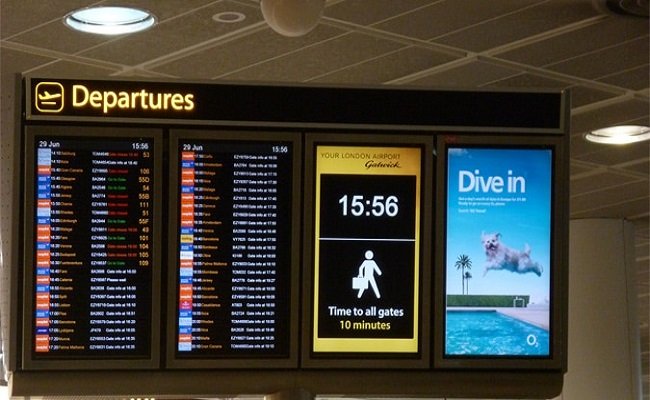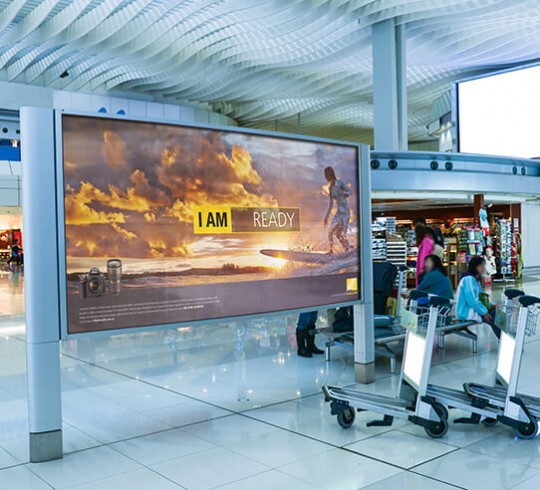

Airports aren’t just transit hubs anymore—they’re retail centers, dining destinations, and customer experience battlegrounds. Travelers expect clarity, speed, and a polished environment. That’s why the LED display for airports has become such a key part of modern terminal design.
From flight information to interactive maps, advertising to ambiance, LED technology is quietly transforming how people navigate and feel inside airports. And with millions of eyes passing through every day, a display isn’t just a screen—it’s a communication tool that needs to work hard and look good.
Let’s take a closer look at why the LED display for airports is no longer optional—and what makes it effective.

Airports are busy, bright, and filled with movement. Travelers need to know where to go and what’s next. The LED display for airports gives terminals a way to show key information—flights, gates, baggage claims, delays—with clarity, even in bright daylight or crowded spaces.
Unlike older LCD or backlit signage, modern LED screens deliver high brightness, wide visibility, and flexible sizing. Whether it’s a departure board over a check-in counter or a full-length wall behind security, these screens are easy to read from a distance and adaptable to high-traffic flow.
In large international terminals, multilingual messaging is a must. An LED display makes it easy to switch between languages or highlight alerts for specific regions—instantly and without replacing signage.
Wayfinding is one of the most common frustrations in airports. The layout is complex, and people are often rushing. A good LED display for airports can make the difference between missed connections and a smooth, stress-free path to the gate.
With dynamic maps, real-time updates, and clean design, these displays help passengers understand exactly where they are and what they need to do next. During peak hours or unexpected delays, they can also be used to direct foot traffic, open new lines, or announce changes on the fly.
For staff, this means fewer people asking the same questions. For passengers, it creates a sense of order—even when the airport is packed.
While LED screens are great for sharing critical updates, that’s just one use. A well-placed LED display for airports also plays a role in storytelling, branding, and retail engagement.
Airports are home to major luxury retailers, food and beverage brands, and destination marketing campaigns. LED walls and hanging displays are now being used to promote shops, highlight local attractions, or display immersive content that gives the terminal a modern, high-end feel.
You’ve likely seen this already: a massive LED video wall showing natural landscapes in a terminal, or a slim screen at the gate showing airline branding. These aren’t just decorative—they set the tone for the traveler’s experience.

Every airport operator is thinking about revenue per square foot—and digital signage helps make every inch of screen space count. With a LED display for airports, terminals can sell advertising space to brands, airlines, tourism boards, and retailers.
Unlike static signage, these ads can rotate, animate, and be targeted by time of day or location. A screen outside a luxury store might run perfume ads in the morning and electronics in the afternoon. That flexibility means more ad inventory and more potential earnings.
Because LED screens are easy to update, they’re also perfect for seasonal promotions, event tie-ins, or urgent announcements—all of which add value to passengers and partners.
Airports never sleep, and neither can their screens. A quality LED display for airports needs to run 24/7, handle ambient light, resist dust and vibration, and stay sharp even after years of use.
That’s why airports are investing in high-quality LED systems with better refresh rates, energy efficiency, and minimal maintenance. Displays need to boot fast, integrate with flight data systems, and scale across multiple zones—all while looking seamless.
There’s also the matter of design. Modern terminals favor clean, open architecture. Today’s slim, low-profile displays fit into these spaces without blocking views or clashing with the environment.

When airports look for display partners, they need more than just screens—they need systems that last and support teams who understand the pressure of round-the-clock operation. That’s where SeeThruDisplays comes in.
Their LED display for airports solutions are built with clarity and durability in mind. From overhead flight boards to immersive retail walls, SeeThruDisplays offers lightweight, high-brightness systems that deliver sharp content in real-world airport conditions.
Their team supports planning, installation, and integration with existing software—making sure screens stay updated, functional, and visually consistent. Whether you’re outfitting a single gate or an entire concourse, they help keep passengers informed and your brand looking sharp.
The LED display for airports isn’t just a tech upgrade—it’s a necessary part of a better travel experience. It helps people navigate faster, stay informed, shop smarter, and feel more connected to the space around them.
As airports grow more complex and traveler expectations rise, LED displays offer a simple, flexible, and scalable solution that meets the moment. And when done well, they quietly improve every journey—without ever getting in the way.